Health and Social Care Level 3: Health Education Approaches
VerifiedAdded on 2023/01/17
|5
|1330
|45
Homework Assignment
AI Summary
This assignment delves into various approaches to health education, focusing on complementary therapies within the context of health campaigns. It examines three distinct approaches: the role of mass media, two-way communication, and community development. The mass media approach utilizes health and lifestyle magazines to target a female audience, promoting self-care and awareness of complementary therapies. Two-way communication is explored in the context of oncology care, emphasizing trust-building and informed decision-making. Community development focuses on providing care for those who cannot afford it, with touch therapies in palliative care. The assignment further analyzes two models of behavior change: the Health Belief Model, using the example of parents of a child with cancer, and Social Learning Theory, using the example of families learning from each other. The document explores the benefits and limitations of each approach and model, providing a comprehensive overview of health education strategies. The document provides a deep dive into the concepts and applications of health education and behavior change models. The assignment demonstrates how to use different approaches to health education and complementary therapies. The paper also includes relevant references that support the arguments and analysis presented in this assignment.
1 out of 5
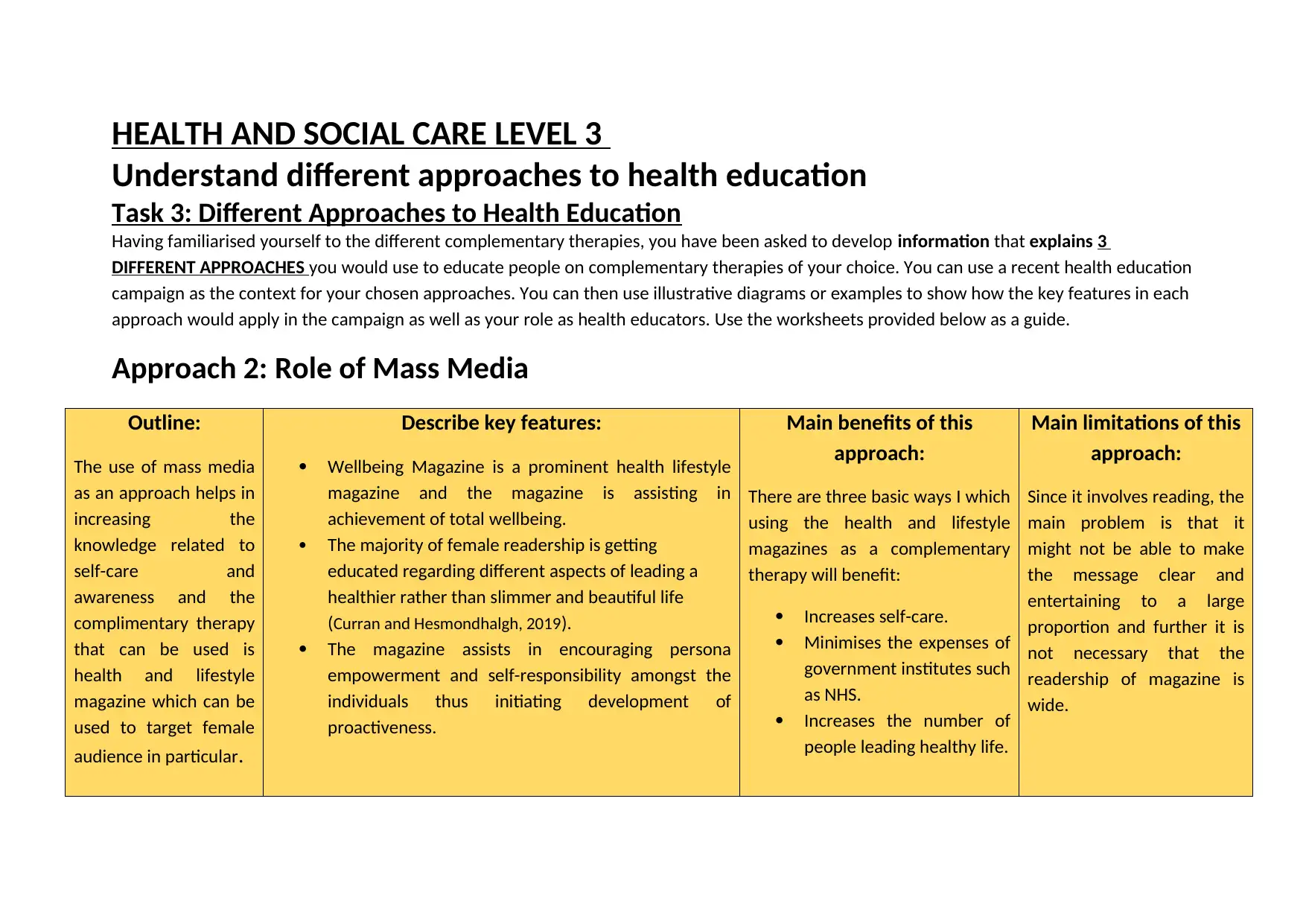
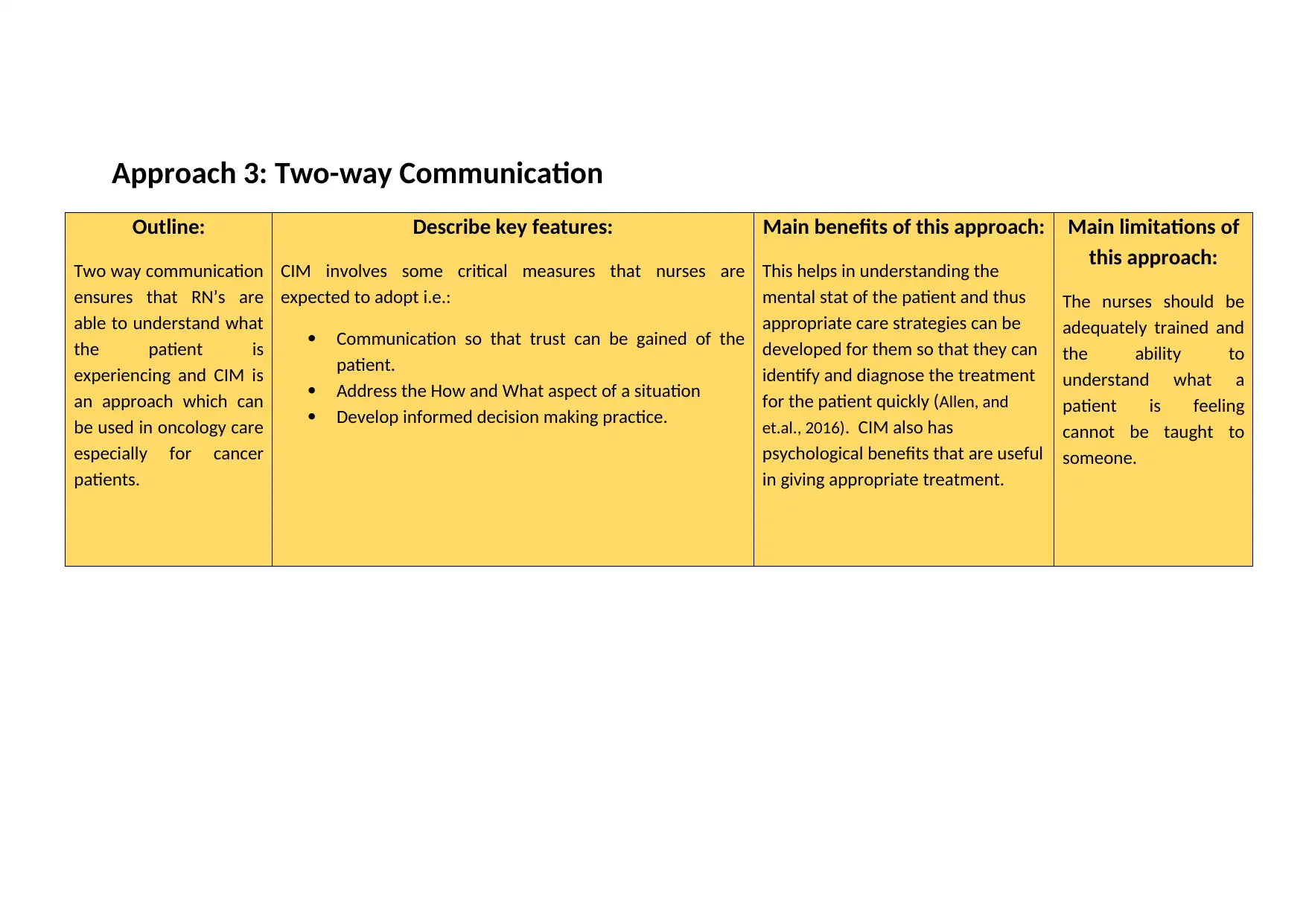
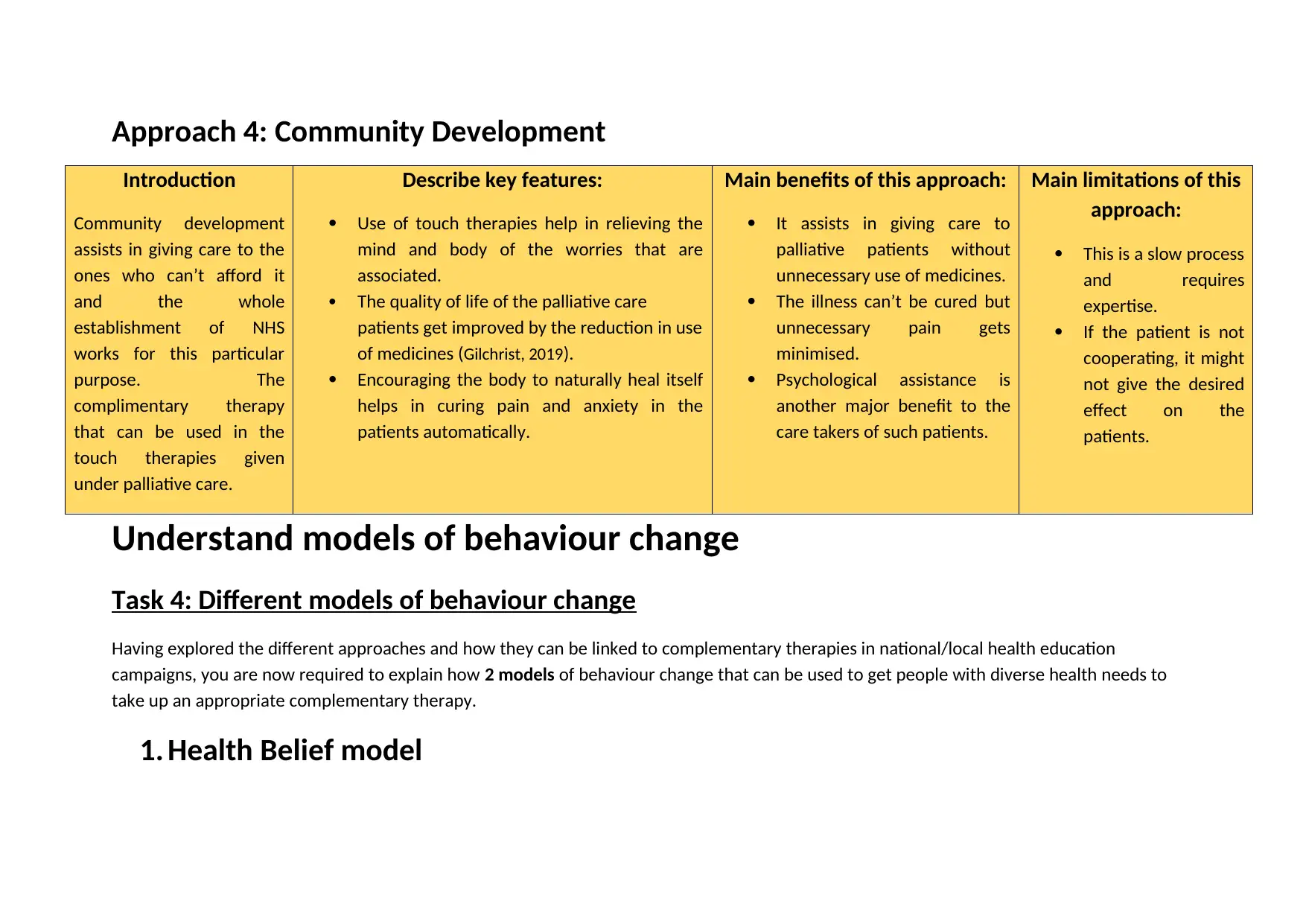

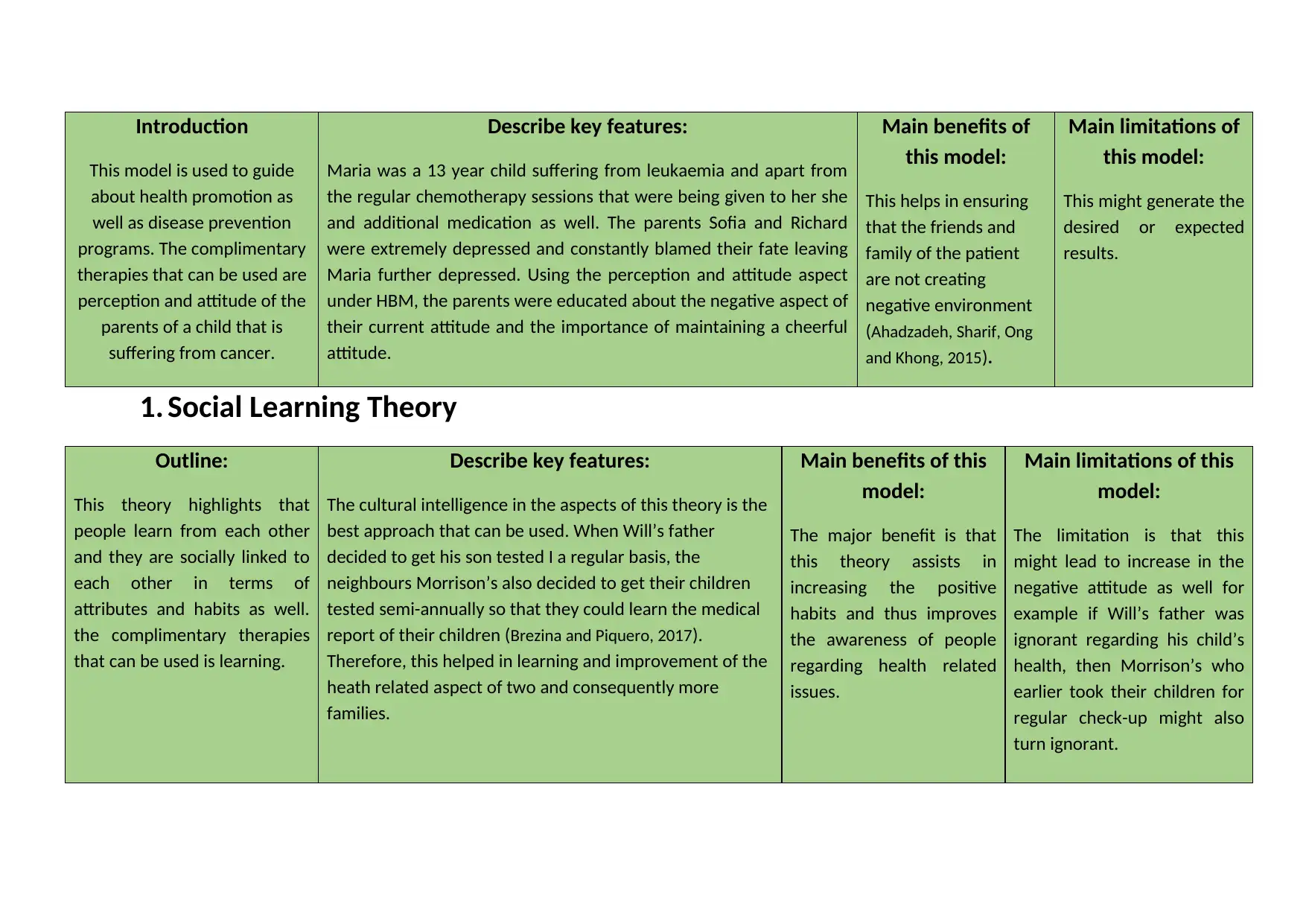
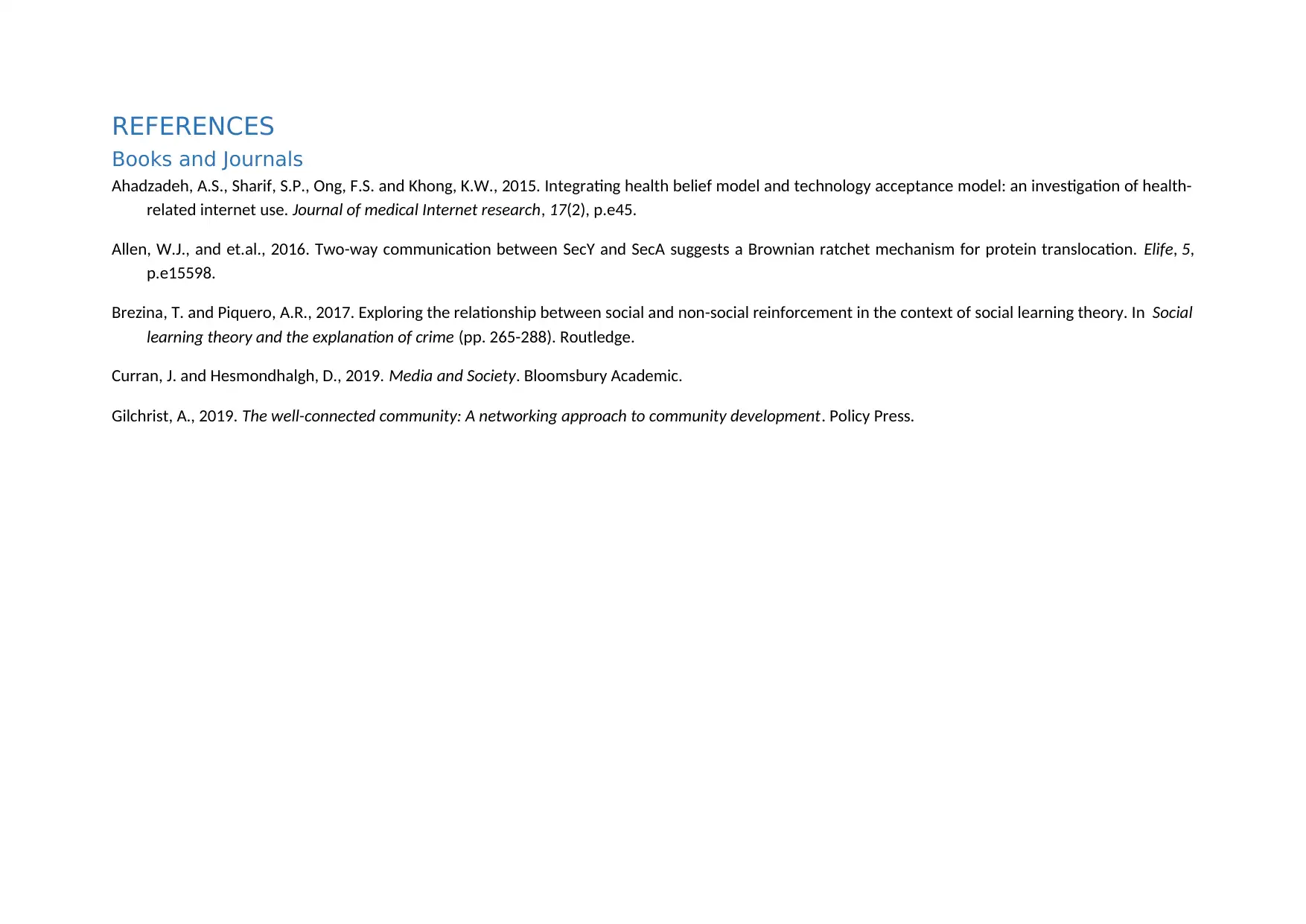






![[object Object]](/_next/static/media/star-bottom.7253800d.svg)